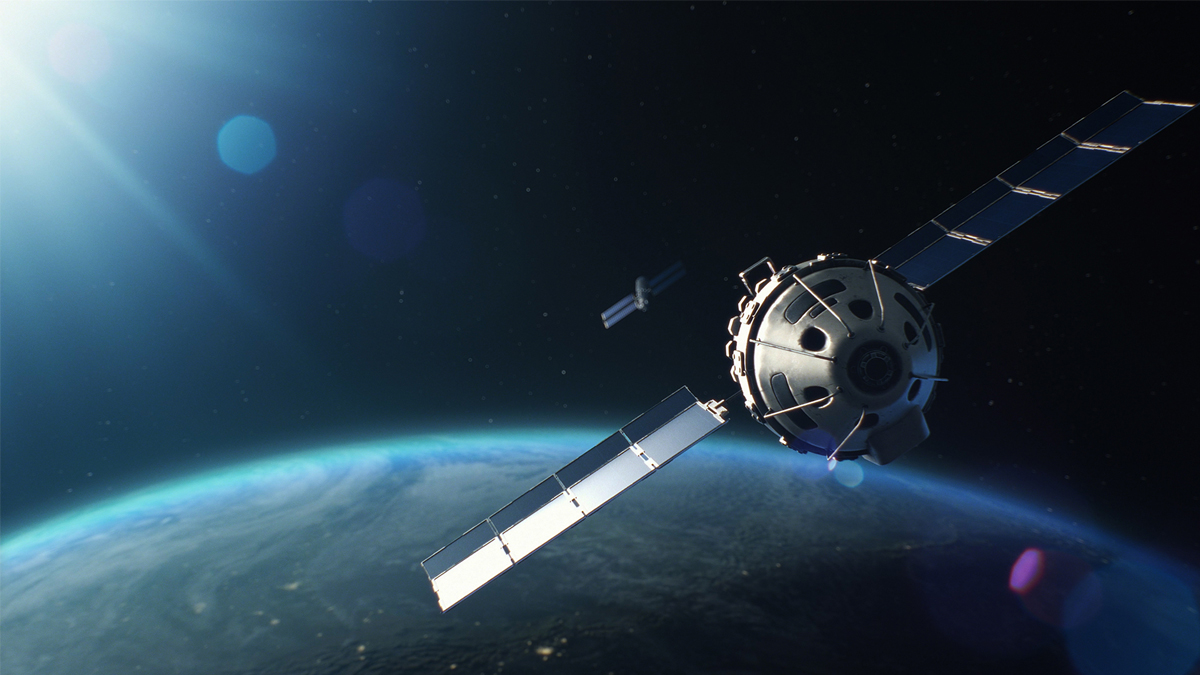
Smallsats have been one of the greatest disruptors of the satellite industry over the last decade, with proliferation and disaggregation taking center stage. Constellations spoke to John Gedmark, CEO and Co-Founder of Astranis Space Technologies, about how MicroGEO satellites are changing the landscape of satellite technology. Here are our top four takeaways from our discussion.
Takeaway 1: Small satellite proliferation isn’t just for LEO.
Astranis has worked for the last nine years to put smallsats into higher orbits including GEO, HEO and MEO—orbits that are valuable industry space, but typically not populated with small satellites. With the US military and the Space Force supporting the proliferation of small satellite constellations, these orbits are changing quickly. “Looking back over the last four years, the biggest single development has been… proliferation, and disaggregation, and moving towards larger numbers of small satellites,” said Gedmark.
“GEO has historically been, and remains today, some of the most valuable real estate in the solar system,” he added. By being able to park a single satellite over a country or region and provide continuous service, satellite operators can depend on a stable business model. By putting smallsats into GEO, Gedmark is also showing that it is possible to get a satellite presence into GEO on a much smaller and affordable scale.
Takeaway 2: MicroGEO satellites and other smallsats can support the capacity and resiliency needs of the US military.
“Almost all of the communications that our US military does today go over GEO satellites,” said Gedmark. “The US military has very capable satellites up there that perform this mission, but they are very large and very expensive and there’s not very many of them.”
That’s where smallsats come in. Small satellites cater to the needs of the US military by offering additional capacity and back-up networks that enhance overall resiliency. This guarantees that satellite networks are continuously connected to the warfighter and that information can always reach the ground in the moment that it is needed.
“There really is a potential issue if you are solely dependent on a handful of these very large, very expensive satellites that are up in GEO today,” said Gedmark. Commercial companies can help fill the gap by offering alternatives for increased resilience and capacity, as well as bringing new technology to bear even faster than what has happened in the past.
“We really are working hard to iterate on the technology and just bring the latest, whether it’s anti-jamming technology or other types of things that they need.”
Takeaway 3: Software-defined satellites in GEO can be reprogrammed and moved depending on the need of the customer.
Last December, Astranis launched four identical GEO satellites on a Falcon 9 rocket. They are currently in transfer orbit and preparing to maneuver via on-orbit propulsion into geosynchronous orbit. The satellites themselves are unique in their construction, with access to more frequency bands than ever before.
“We call it the Swiss army knife of satellites because it has multiple frequency bands, and can switch between those different bands,” said Gedmark, and noted that it could access KU band, KA band, as well as Q and V bands, which are newer bands not typically used in communication satellites, set to frequencies as high as 40-50 gigahertz.
“It’s an interesting thing that no on has done before, demonstrating that you can put this satellite up,” said Gedmark. “It’s very adaptable, very flexible.” The satellite also includes flexible tech like a software-defined radio. “We can reprogram the radio on orbit depending on exactly what it’s being used for,” he said. Flexible GEO smallsats that can be moved from mission to mission—and that can be reprogramed depending on the needs of the customer—make it easier for other players to enter the satellite space.
Takeaway 4: To stay ahead in the modern space race, smallsats will have to proliferate across every orbit.
When asked to give advice to other space startups, Gedmark kept it simple: “space is hard, and it is a marathon, not a sprint. You really have to build for the long term.”
He also predicted that satellite proliferation across every orbit will become a necessity, not a perk. While proliferation in LEO has become the norm across the industry, moving smallsat constellations into the higher orbits will be a necessary aspect of keeping the US space presence competitive on the global scene.
“China has really been leaning forward on what they’ve been doing around the moon, and that is territory that we cannot cede to China or anyone,” said Gedmark. “We’ve got a lot of work cut out for us there.”
For more on satellite production and mega-constellations in LEO, listen to the full podcast episode.
Explore More:
The Small GEO Satellite Market is on the Cusp of Sizeable Growth
On-Orbit Servicing and RPOD are Driving Satellite Propulsion Innovation
Podcast: Old Versus New, Plug and Play and Responsive Satellites
